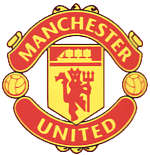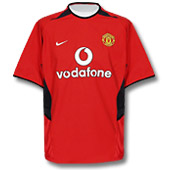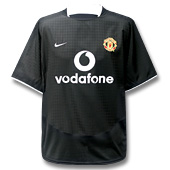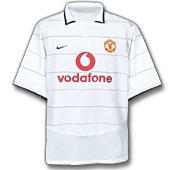Manchester United - A Case Study
Around 1999, Manchester United Football Club decided to change the club crest.
 |
 |
Old Club Crest |
New Club Crest |
While the changes are subtle, the change in mindset is significant. This was the completion of a change from football club to global brand.
As a publicly traded company (MNU - London Stock exchange, Manchester United Football Club Public Limited Company (PLC)) releases annual statements of profit and loss. As with many annual reports, the PLC also shares insght into the company philosophy and direction for the future. Here are some excepts from the 2003 Annual report:

Manchester United is one of the leading clubs in world football (soccer), with a global brand and following that embodies the passion and excitement of the world's most popular sport.
Our goal is, through innovation, commitment and evolution, to protect and develop the brand by sustaining the playing success on the field and growing the business to enhance the financial strength of the Group. (Inside cover)
The depth of our fans' affinity with the Club and the breadth of our global supporter base are influential factors in growing the value of media and sponsorship rights, a key strategic objective for the Group.
The
chairman has reiterated our four core strategies:
· Maintaining the playing success
· Developing the value of media rights
· Leveraging the global brand
· Converting more fans into customers. (p.7)
The Nike shirt launch:
The launch of our new home shirt by Nike subsidiary MUML on 1 August 2002 signalled the start of a new partnership to build on the Manchester United trademarks by developing and delivering products and services around the world. In the year to May (In a fiscal year of July 31 to July 31. May would be month 10 of 12) Nike sold over 2.5 million replica shirts. (p.23) (Retail $90 CDN. This figure also includes away shirts and a 3rd shirts. These shirts are updated on a rotating basis, every 2 years.).
 |
 |
 |
"Home" |
"Away" |
"3rd
Shirt" |
Page 25:

Converting
fans into customers
Successful USA tour:
In our pre-season USA Tour, the Manchester United team visited four American cities (Seattle, Los Angeles, New York and Philadelphia) where in front of 270,000 fans we took the opportunity to develop our US fan base and to work closer with or partners Nike, Pepsi and Budweiser. The fans' response outstripped our best expectations and the four wins against top European and Mexican opposition provided a strong start to the season. (p.27)
Providing services to our fans:
The launch of 'One United' (internet) membership scheme in June 2003 was designed to appeal to not just the matchday fan, but also to our fan base around the world. 125,000 members had signed up within a month of launch. (p. 28)
Building knowledge about our fans:
Understanding our fans' interest and the way in which they interact with the Club is a core objective of the new Customer Relationship Management (CRM) system that went live in early 2003. The completion of the first phase enabled the consolidation of all relevant data on fans. As at (sic) July, 2003, there were 1.9 million fan records on the database and we are on track for 3.5 million fan records by December 2005. (p. 30).
Manchester United are well aware of the fact that fans are truly fanatic. Fans will support the team, and in turn, support companies that support the team. By developing alliances with other major corporations like Pepsico, Master Card, Nike, Budweiser, Schick, and Fuji film, Manchester United virtually guarantees sales through fans in return for handsome sponsorship deals. These deals spin off into further money - by consistently fielding an excellent team, Manchester United keeps a high profile and earns additional money through TV contracts that reward clubs that advance in major European football competitions.
So successful
is this setup that Manchester United is annually declared one of the "Richest
Clubs in the World" as reported by Deloitte
& Touche. This financial clout has enabled Manchester United to sponsor
mortgage and loan applications as well as credit cards. Many have speculated
that Manchester United sounds more like a bank than a football club these
days.
To see more of their practises and branding, go to the Manchester United Official Website.
BACK